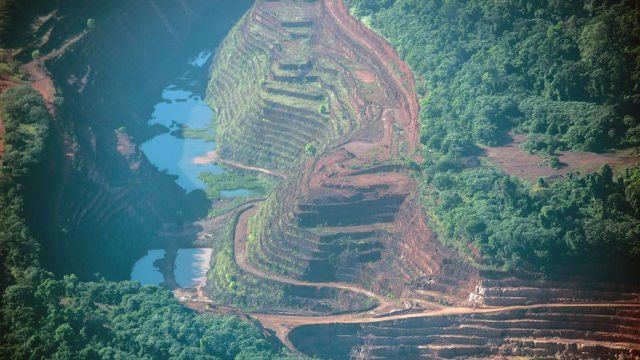SUMMARY
This is AI generated summarization, which may have errors. For context, always refer to the full article.

BRASÍLIA, Brazil – Brazil’s environment minister demanded urgent action Thursday to reverse double-digit rises of as much as 52 percent in the rate of deforestation in some Amazon regions over the past year.
Agricultural production has been blamed for the spike but enforcement has also been lax in a giant country encompassing around 8.5 million square kilometers (3.3 million square miles), around three fifths of which is forest.
Environment Minister Izabella Teixeira called an emergency meeting and urged action from regional authorities after official data covering August 2012 to July of this year revealed the scale of the problem.
“We confirm a 28-percent increase in the rate of deforestation, reaching 5,843 square kilometers (2,256 square miles),” she told reporters, citing an overall figure from the provisional data.
Extensive farming and soybean production in the northern state of Para and the central western state of Mato Grosso were behind the rise, the minister said, citing increases for the two states of 37 and 52 percent respectively.
Teixeira said she would meet with senior Amazon regional environment officials next week to demand explanations and measures to take on her return from a UN climate change summit in Warsaw.
She also criticized the apparent ineffectiveness of monitoring by federal state authorities.
“The Brazilian government does not tolerate and does not accept any rise in illegal deforestation,” the minister said, insisting Brasilia is firmly committed to drastically reducing deforestation.
Although large in percentage terms, the rise in absolute terms is the second smallest in recent years as 2012 saw 4,571 square kilometers of deforestation, after a huge 6,418 square kilometers loss in 2011.
The worst year on record was 2004, when 27,000 square kilometers of forest was lost.
Global agricultural production giant Brazil is caught between environmental pressures and the interests of large-scale farmers.
The country’s forestry code requires landowners in the Amazon, the Earth’s largest area of jungle, to devote 80 percent to native forests, but it has not been adequately enforced and there have also been issues of identifying which areas fall under state or private ownership.
Teixeira said Brazil would respect international conventions calling for a stark reduction in Amazonian deforestation and insisted the government would do whatever is necessary.
“Our commitment is to overturn any increase in deforestation; our goal is to eliminate deforestation,” Teixeira said.
The agribusiness lobby is strong in Brazil, which is seeking to feed a population of close to 200 million.
While limiting farming, a revised forestry code from last year allows landowners to cultivate riverbanks and hillsides that had been exempt, dismaying some environmentalist groups.
Institute Amazon spokesman Adalberto Veríssimo said the government had delivered “a very positive reduction in Amazon deforestation over the past decade.”
But he added that the passage of the new forestry code increased land price speculation and insisted that “the government gave a signal it would not come down too hard to combat that.”
Recent years have seen Brazil come into conflict with environmental campaigners and those working in agriculture as it struggles with weighing protection against the needs of the sector and demand for food production.
Indian populations in the Amazon are up in arms at congressional plans to offer mining concessions in the region.
They are also fearful of the mooted transfer away from the justice ministry to a Congress influenced by a strong agricultural lobby of the right to delineate their territorial boundaries.
Most of Brazil’s 900,000-strong ethnic population live in the Amazon region. – Rappler.com
Add a comment
How does this make you feel?
There are no comments yet. Add your comment to start the conversation.